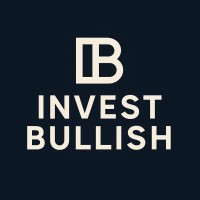Luxury Hits a Wall in Asia
Europe’s flagship luxury brands—LVMH and Kering—are showing cracks in what was once considered an inflation-proof, recession-resistant segment. The slowdown in China’s post-COVID rebound, combined with shifting consumer behavior, has led to a sharp correction in Q3 outlooks.
- LVMH (EPA: MC) fell 6.4% this week
- Kering (EPA: KER) dropped 8.9%, revising its FY2025 guidance downward by 12%
This marks the worst quarterly performance since 2020 for the sector.
2. What’s Driving the Slowdown?
Chinese luxury buyers, once the engine of global luxury growth, are pulling back:
- Youth unemployment remains high (~18.4%)
- Household savings rates in Tier-1 cities have risen to 38%, signaling risk aversion
- Travel-linked duty-free shopping remains ~25% below 2019 levels
The “aspirational buyer” segment—middle-class consumers purchasing single luxury items per year—has shrunk significantly, especially outside Shanghai and Beijing.
3. LVMH Earnings Breakdown
- Q2 Revenue: €21.1B (vs. €22.4B expected)
- Fashion & Leather Goods: +3% YoY (vs. +8% est.)
- Asia (ex-Japan): –11% YoY
- Perfumes & Cosmetics: –4%
- Operating Margin: 26.7% (down 190 bps)
CEO Bernard Arnault warned:
“We are entering a new phase. The exceptional post-COVID boom is over. Consumers are more cautious and discriminating.”
4. Kering’s Crisis Is Deeper
- Revenue (Q2): €4.1B (–6% YoY)
- Gucci Sales: –12% YoY
- Asia Revenue Share: 37% → 31%
- Operating Profit: €880M (–19% YoY)
Kering’s over-reliance on Gucci, which accounts for over 60% of operating income, has turned into a liability. The brand has struggled to regain cultural cachet among Gen Z buyers.
A new CEO at Gucci is expected to overhaul brand positioning by 2026, but analysts fear brand fatigue could deepen before recovery.
5. Strategic Concerns
| Factor | LVMH | Kering |
|---|---|---|
| China Exposure | 29% of total rev | 37% of total rev |
| U.S. Recovery | Stable at +4% YoY | Weak at +1% YoY |
| Portfolio Diversification | High (75+ brands) | Medium (Gucci-heavy) |
| Pricing Power | Still strong | Weakening |
Luxury pricing power is starting to erode as even affluent consumers grow sensitive to inflation and global volatility.
6. Bigger Picture: Global Luxury at a Crossroads
Global Luxury Index (compiled by S&P Global): –9.8% YTD
Luxury ETF Flows: –€420M net outflow in past 6 weeks
Consumer Confidence in Asia: Weak across South Korea, China, and Taiwan
Luxury firms are also facing:
- Rising competition from high-end Chinese domestic brands (e.g., Icicle, Neiwai)
- ESG scrutiny on sourcing and labor practices
- Reduced U.S. tourist spending in Europe due to dollar weakness
7. Analyst Consensus and Price Targets
| Stock | Current Price | Avg. Analyst Target | Upside Potential | Consensus |
|---|---|---|---|---|
| LVMH | €748 | €805 | +7.6% | Hold/Accumulate |
| Kering | €383 | €420 | +9.7% | Underweight |
JPMorgan and Deutsche Bank downgraded Kering this week, citing lack of strategic clarity and margin risk.
8. Investor Takeaway
Luxury stocks are no longer “safe-haven equities” in a world where Chinese growth is decelerating, Western inflation is sticky, and consumers are reprioritizing spending.
Short-term View: Expect volatility through Q4, especially if Chinese macro data worsens.
Long-term View: LVMH remains best-in-class for portfolio resilience. Entry under €700 is historically opportunistic. Kering remains speculative until brand turnaround proves tangible.

